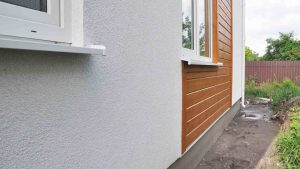When it comes to insulating your home, the options can seem overwhelming. From cavity and loft insulation to external wall insulation, each type has its own set of benefits and drawbacks. In this article, we aim to simplify the complexities by comparing these three popular insulation types, helping you make an informed decision for your property.
Table of Contents
- Introduction
- Why Insulation Matters
- Cavity Wall Insulation
- Loft Insulation
- External Wall Insulation
- Comparative Analysis
- Conclusion
Introduction
Insulating your home is a crucial step towards achieving energy efficiency and comfort. However, not all insulation types are created equal. Depending on the structure of your home and your specific needs, certain methods may be more suitable than others. This article will delve into the key features, pros, and cons of cavity wall insulation, loft insulation, and external wall insulation.
Why Insulation Matters
Proper insulation acts as a thermal barrier, reducing the amount of heat that escapes during winter and limiting the heat that enters your home during summer. Effective insulation leads to reduced energy bills and a more comfortable living environment. But which insulation type is right for you?
Cavity Wall Insulation
What is it?
Cavity wall insulation is designed for homes with cavity walls, which consist of two layers separated by a gap or ‘cavity.’ The insulating material is injected into this cavity to reduce heat loss.
Pros
- Quick and straightforward installation
- Less invasive as it doesn’t affect the home’s appearance
- Cost-effective, with reasonable initial costs
Cons
- Not suitable for homes with solid walls
- Insulating material can degrade over time, requiring maintenance
Loft Insulation Comparison
What is it?
Loft insulation involves laying insulating material like mineral wool or foam boards in the loft or attic space, preventing heat from escaping through the roof.
Pros
- Easy to install and often a DIY possibility
- Effective in reducing heat loss through the roof
- Relatively low cost
Cons
- Only addresses heat loss through the roof, leaving walls uninsulated
- May require additional insulation for optimal results
External Wall Insulation
What is it?
External wall insulation involves attaching an insulating layer to the exterior of the walls and covering it with a special type of render or cladding.
Pros
- Effective for homes with solid walls where cavity wall insulation is not an option
- Comprehensive coverage, resulting in higher energy savings
- Can improve the appearance and value of the property
Cons
- High initial cost
- Alters the appearance of the home, which may not be desirable for some homeowners
Loft Insulation vs Wall Insulation
When choosing between cavity wall insulation, loft insulation, and external wall insulation, consider the following factors:
- Home Structure: Cavity wall insulation is only suitable for homes with cavity walls. If your home has solid walls, external wall insulation may be the better choice.
- Coverage: Loft insulation is effective for reducing heat loss through the roof but doesn’t address wall insulation. Combining it with either cavity or external wall insulation can provide a more comprehensive solution.
- Cost: Cavity and loft insulation are generally less expensive but may offer lower energy savings compared to external wall insulation, which has a higher upfront cost but can result in significant long-term energy savings.
- Aesthetics: While cavity and loft insulation do not alter the appearance of your home, external wall insulation can be designed to improve your property’s visual appeal.
Conclusion
Insulating your home is a crucial step towards energy efficiency and comfort. Cavity wall insulation, loft insulation, and external wall insulation each have their pros and cons. The best choice will depend on your home’s structure, your budget, and your long-term energy-saving goals. By understanding the features of each type, you can make an informed decision that best suits your needs.








